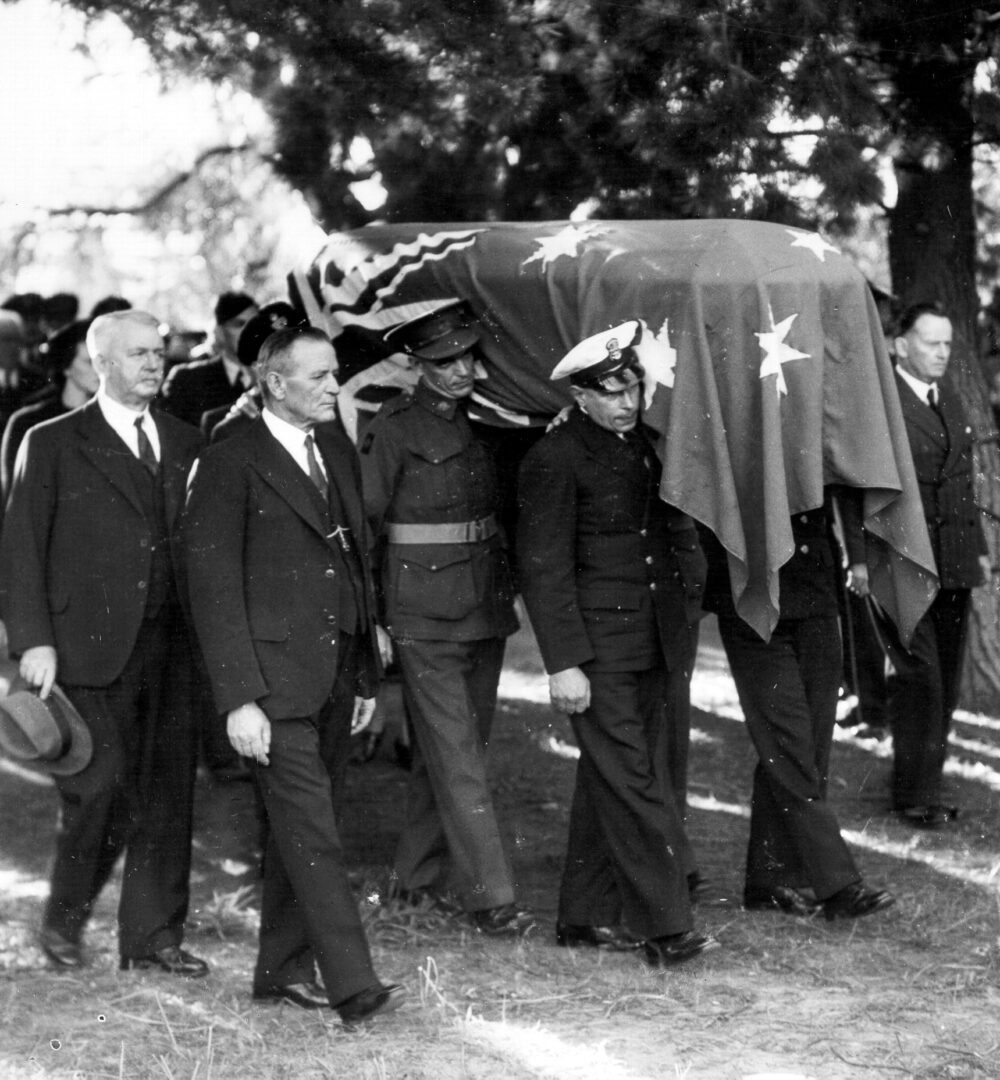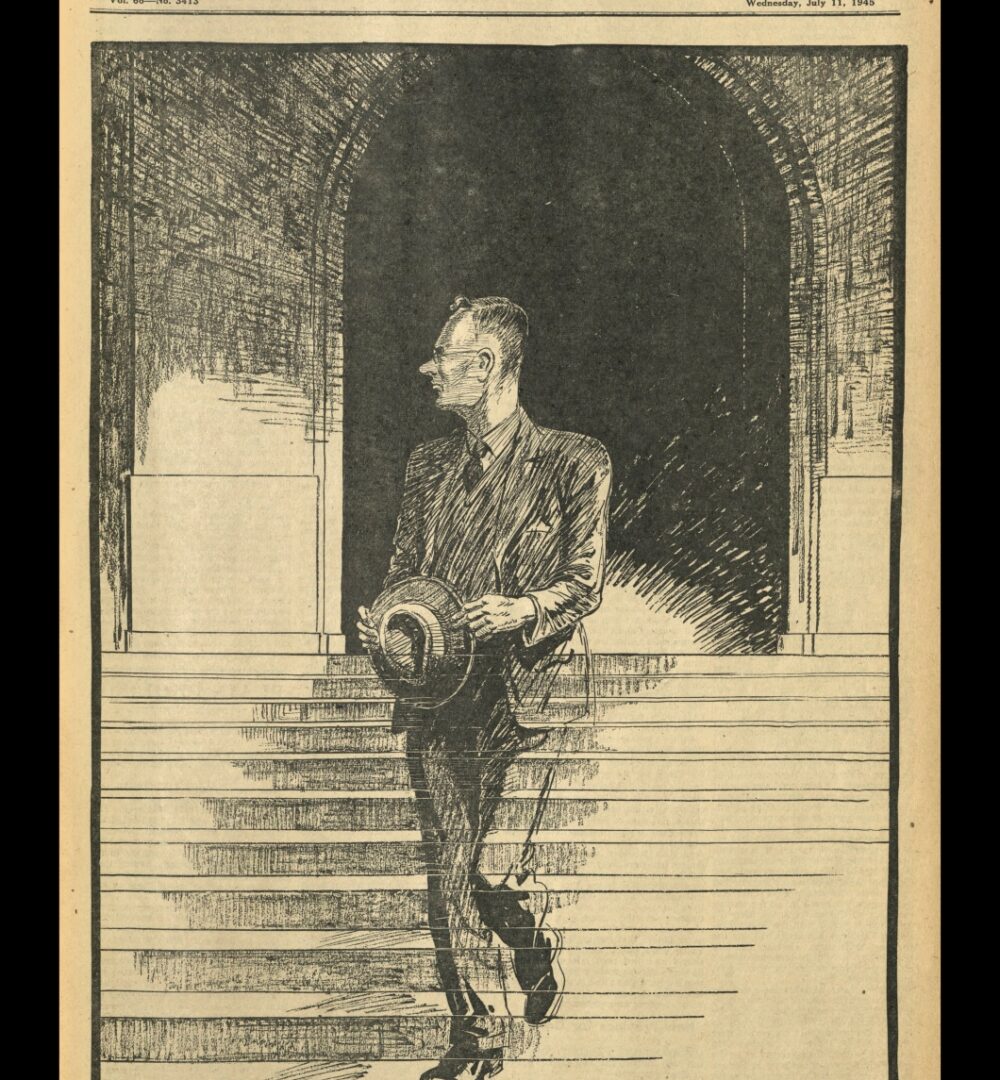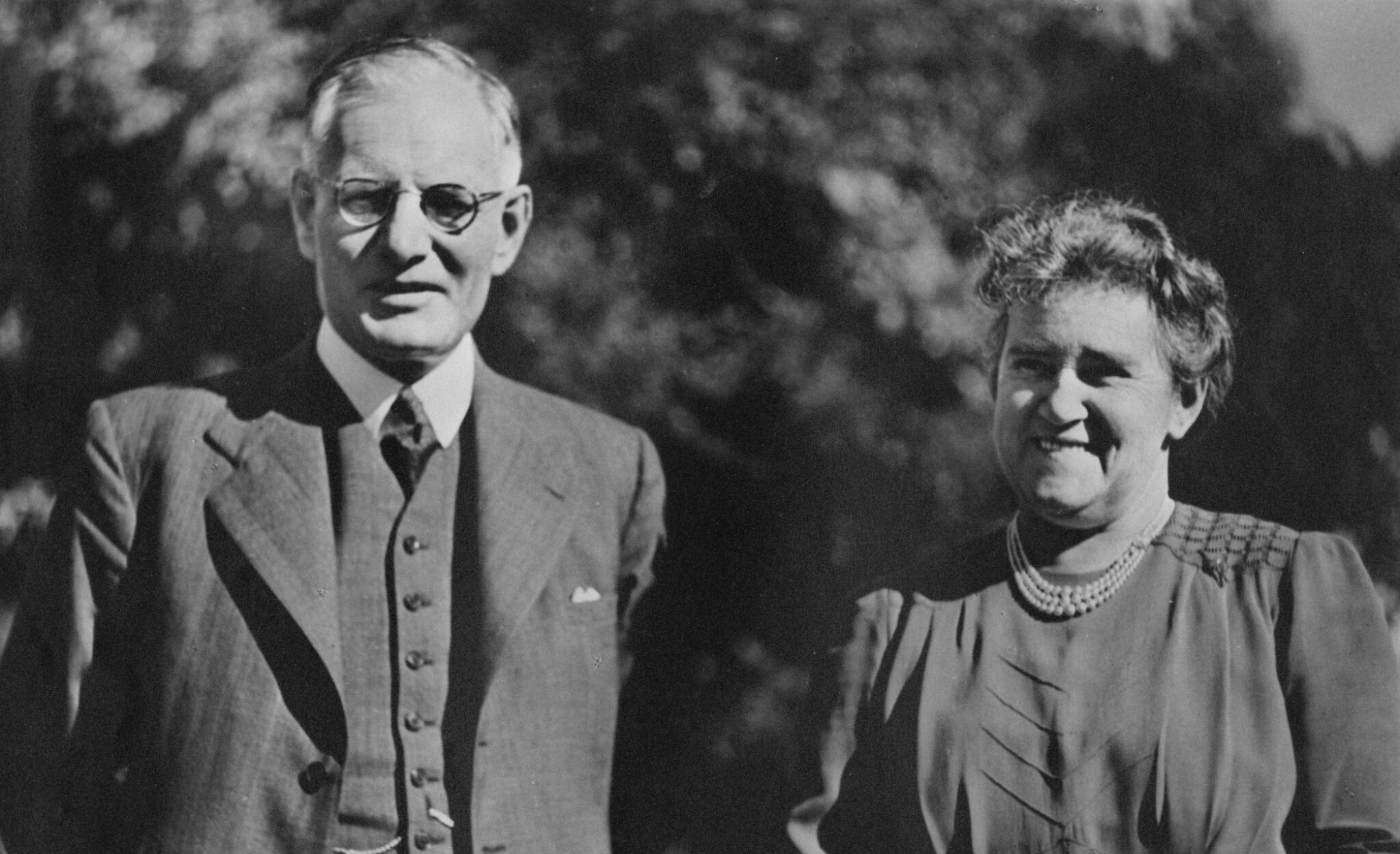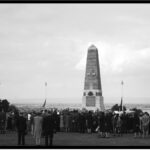Reading time: 3 minutes
Our university’s namesake, John Curtin, died 80 years ago on 5 July 1945. For the last weeks of his life, he had been confined to his bedroom in the care of nurses at the Prime Minister’s Lodge in Canberra, suffering heart disease. After leading Australia through the Second World War since October 1941, newspapers had been speculating that he was holding on as prime minister for the end of the war in the Pacific. He died six weeks before the defeat of Japan. This photograph is the final one taken of him and his wife Elsie on 27 April 1945.
Our current John Curtin Prime Ministerial Library exhibition, ‘1945: The Price of Peace’, commemorates Curtin’s death and other key events from 1945. On display are cablegrams of condolence from President Harry Truman (USA) and Prime Minister Winston Churchill (Britain). Churchill sent his message on the day he faced a general election which saw his party lose government. He wrote to Elsie:
During these last fateful years, your husband and I exchanged many messages about our common effort, and I was so glad that during his visit to this country I could get to know personally a man for whose quality, character and leadership I had formed so high a regard. (JCPML00397/17)
After a memorial service in Canberra, Curtin’s body was flown back to Perth for his funeral on Sunday 8 July 1945. Many people lined Stirling Highway to watch the procession from Cottesloe to Karrakatta Cemetery. The panorama in our exhibition shows some of the 20,000 people gathered for the graveside service conducted by Curtin’s friend, the Reverend Hector Harrison. Harrison spoke of ‘the anguish of a man of peace who loathed war with all his heart and soul, of one who spent his life in an attempt to promote human understanding, and yet who by a strange irony of fate was chosen by destiny to lead the nation in her hour of direst peril’ (JCPML00020/1).

Typical of reactions to Curtin’s death, the Melbourne Herald newspaper editorial declared, ‘He died as a war casualty, having chosen the risk of burdens beyond his strength … The Prime Minister saw his work as a mission that demanded everything of him.’ (5 July 1945, p. 4) Curtin had been a popular prime minister and was remembered for the way he rallied a nation in its greatest crisis. Behind the scenes, he held together his own party and cabinet in the face of conflict, while standing up for Australia’s interests internationally. He looked ahead to building a fairer Australia after the war, his government introducing widows’ pensions, maternity allowances, and unemployment and sickness benefits. Personally, he was celebrated for his authenticity and lack of pretension – he led by example, living simply, working long hours and spending sleepless nights worrying about the fate of Australian soldiers. Curtin’s reputation endures to the present day – a major survey of historians and political scientists conducted by Monash University in 2010 and 2021 saw Curtin ranked Australia’s best prime minister both times.

The ‘1945: The Price of Peace’ exhibition is on Level 3 of the TL Robertson Library until November.



